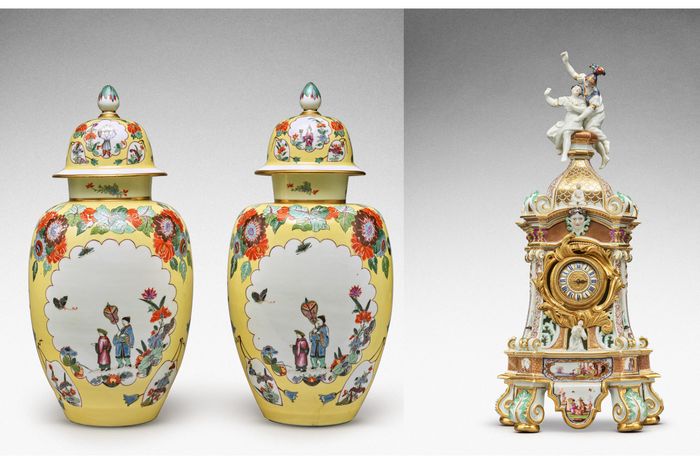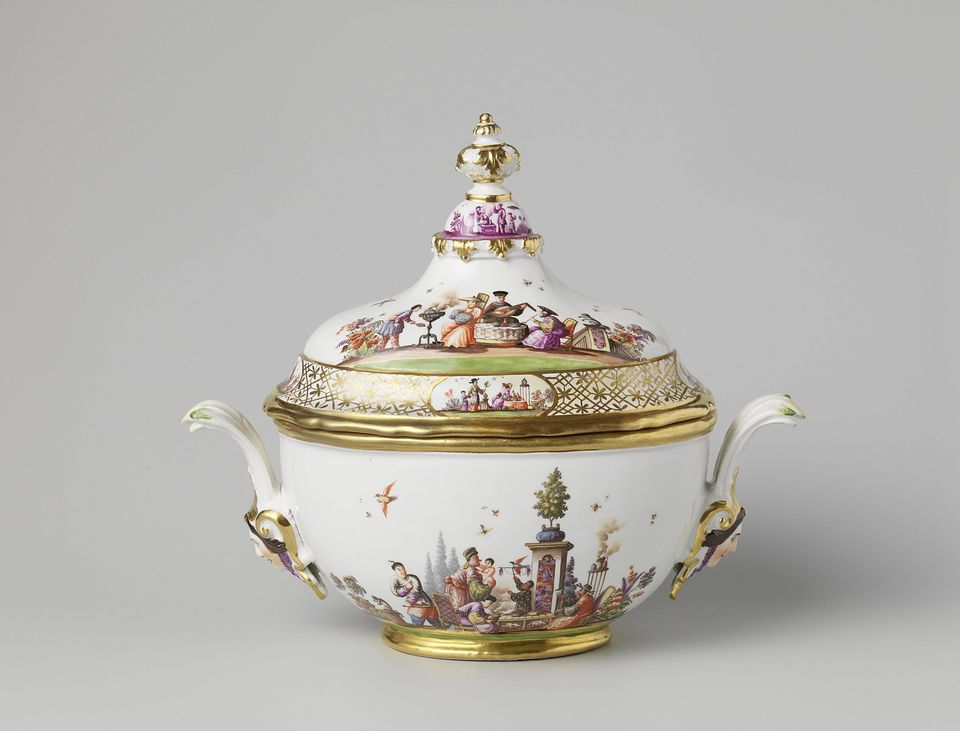
It is going to become a historical event in the art world and one which will leave its trace not only on the art of porcelain, but also on restitution. I am talking about the upcoming sale of the greatest pre-war collection of Meissen porcelain, which Sotheby’s announced this week. Assembled by Dr. Franz and Margarethe Oppenheimer in the early decades of the 20th century, it is composed of exquisite examples of 18th century Meissen porcelain of the type can be found in museums – The Frick, The Met, the Getty, and the Louvre.
The story of Meissen reads like a detective mysterious tale, where aristocrats, thieves, and alchemists were involved in plots, racing to find a treasure; the treasure was the best kept secret which thousands of Chinese craftsmen kept for centuries. It was the formula to make pure, hard-paste porcelain, known is Europe as the ‘White Gold.’ From the moment Marco Polo, the Venetian explorer, who had traveled along the Silk Road in the late 13th century brought with him a piece of Chinese porcelain, the royal houses of Europe began that race to discover the secret. Nothing that magical was ever seen in Europe before: white, hard, and translucent.
After centuries of a race where royal houses across Europe spent funds and efforts dealing with alchemists and con artists, the secret was discovered in 1709. The winner was Augustus the Strong, Elector of Saxony who were known to have traded an entire regiment of soldiers for 150 pieces of porcelain. His obsession drove him to hire alchemist Johann Friedrich Böttger, who happened to be the first to find the secret formula for white porcelain and the ambitious King quickly founded the Meissen Porcelain Manufactory—the first porcelain manufactory in Europe. He revolutionized the porcelain market worldwide, the design possibilities in porcelain, established a new vocabulary which was pure ‘European,’ The rest is history.
The story of the Oppenheimer collection of Meissen porcelain is no less fascinating. It was assembled and had been owned by the late Dr. Franz and Margarethe Oppenheimer, connoisseurs who were determined to build the best collection of Meissen by acquiring only pieces of historical significance. They kept it at their home on Regentenstrasse in Berlin, and it was recorded in a two-volume catalogue published privately and authored by ceramics scholar Ludwig Schnorr von Carolsfeld. Following the persecution in Germany by the Nazis, the Oppenheimers were forced to fled to Austria in 1936, taking with them some of their possessions, including the celebrated Meissen collection. But when the Nazis took control of Austria two years later, the were forced to move again and again, eventually settling in New York. Yet, there were not able to carry the porcelain treasure and it was confiscated by the Nazi authorities. Consequently, the collection changed hands several times over the years, and eventually became part of the holdings of the Dutch State from which it was loaned to museums in the Netherlands. It was recently restituted to the Oppenheimers’ heirs.
This collection is so unique and it includes pieces from the private collection of Augustus the Strong, founder of the Meissen porcelain factory. It is estimated at $2mm, and will definitely make history. September 14th at Sotheby’s.









